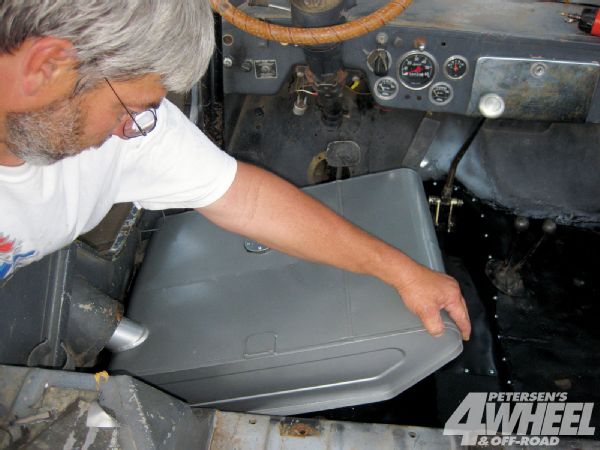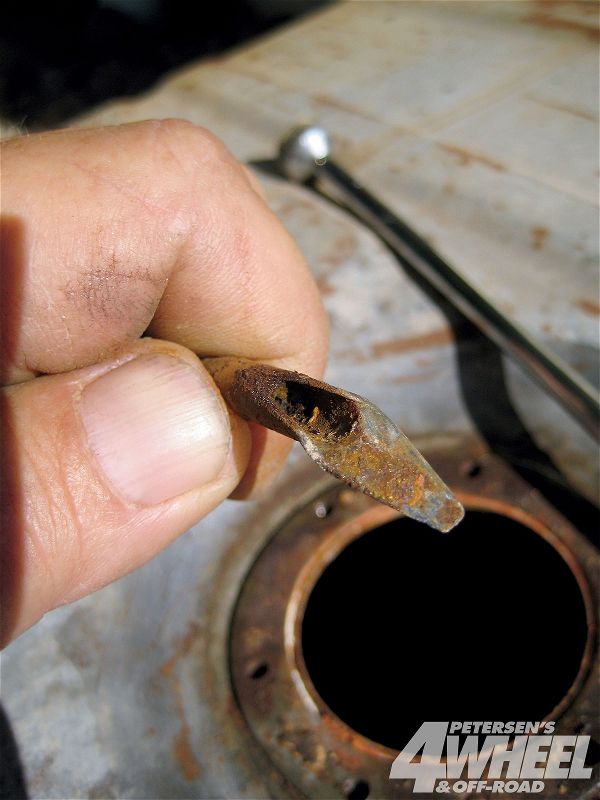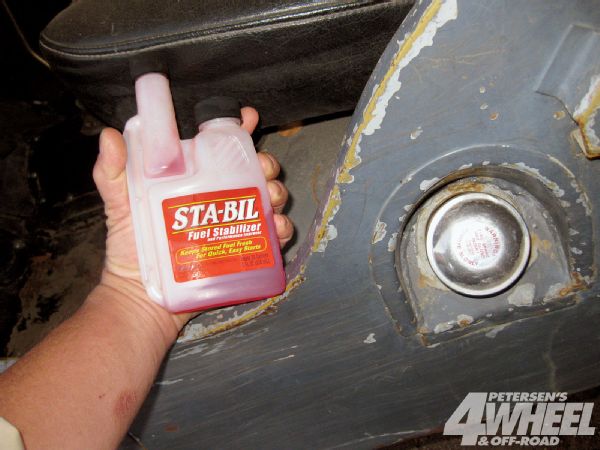 Rick Péwé
Editor-in-Chief, 4Wheel & Off-Road
Photographers:
Rick Péwé
Rick Péwé
Editor-in-Chief, 4Wheel & Off-Road
Photographers:
Rick Péwé
Gasoline is one fine petroleum product, but let it sit around and it quickly degrades. Sure, it will still burn, but modern gas is extremely unstable in a storage environment, and an old gas tank in an unused 4x4 is probably the worst scenario. Condensation inside the tank can cause corrosion right off the bat, eating away metal parts and leaving tiny bits of rust to work through the fuel system, eventually clogging it up. The old cruddy gas itself turns into a sort of gummy varnish, hence the term "gumming up the works." And fuel starvation is a bad thing when you are in the middle of some exotic 4x4 maneuver, in a mud pit, on a cliff, or on the freeway.

Of course the smart thing to do is to keep a fresh tank of fuel in your ride and drive it all the time with good filters. But for us, that rarely happens. In fact, we regale in getting a 30-year-old rig fired and driving on its own power with '80s-era gas, but eventually we're mired down on the roadside cleaning filters, jets, and fuel lines.
 The old gas tank was full of rust and varnish from sitting for 20 years. While we nursed the Jeep along for years after, cleaning the tank would have been an alternate solution. Notice the rust and gummy varnish nearly plugging the fuel pickup tube. We figured that replacing the tank was far better than cleaning it out.
The old gas tank was full of rust and varnish from sitting for 20 years. While we nursed the Jeep along for years after, cleaning the tank would have been an alternate solution. Notice the rust and gummy varnish nearly plugging the fuel pickup tube. We figured that replacing the tank was far better than cleaning it out.
To combat this recurring plague on Pete's Jeep, our '48 CJ-2A flattie project, we called Omix-Ada for a replacement fuel tank and the associated bits and pieces. O-A sells its wares through a variety of 4x4 shops and offers most anything for almost any year or style of Jeep. We decided that since we would be replacing the fuel sending unit and matching dash gauge, a refresh on all the gauges would be in order. And since nothing is easy on any old rig, we figured redoing the floor and associated brackets might be a good idea as well. A month of wrenching and quite a few busted knuckles later, we can now cruise down the road or trail without running on vapors, and we can even tell how much gas we have left!
Keep Your Gas Fresh
Since gasoline typically starts to degrade after 30-60 days, our internal combustion engine collection is constantly having fuel issues. From motorhomes with dual tanks to weedwhackers and chainsaws only used once a year, the fuel left in the tank simply "gums up the works." Our solution to the problem is Sta-Bil, a fuel additive formulated to keep fuel fresh for up to a year or more. It also helps fight corrosion from water being absorbed by the ethanol in our modern fuels and helps fight the rust in steel tanks. Make sure you also rotate your stored fuel; we mark every container with a fill date and keep a list of where every container is squirreled away.
 PhotosView Slideshow
PhotosView Slideshow


 PhotosView Slideshow
PhotosView Slideshow


 PhotosView Slideshow
PhotosView Slideshow


